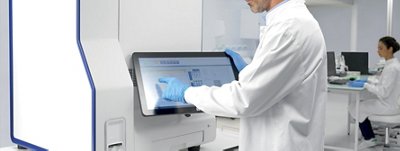Validation Protocol
The pharmaceutical industry is highly regulated in a number of ways. One of them is Qualification and Validation. But what are we talking about? Why do we talk about Qualification AND Validation? What does this apply to? What tools accompany these approaches? How are they deployed?
In the Pharmaceutical industry, Validation protocol and/or Qualification protocol list a set of procedures (tests to be performed) used to check if a product meets the proper requirements of its intended purpose.

Qualification/Validation Protocol Regulations and Requirements
Pharmaceutical oversight and guidance on a global level demand the highest standard of protocol.
The FDA, through the cGMP, requires validation process for the quality assurance of a drug product. According to the FDA’s process validation principles and practices, the following conditions should exist when preparing validation protocol.
- Quality, safety, and efficacy are built into the product.
- The quality of the product cannot be adequately assured by in-process and finished-product inspection.
- Each step of a manufacturing project should be controlled to assure that the end product meets quality specifications.
The EU requirements for qualification and validation are similar. They define in the GMP requirement that drug manufacturers control the critical operational aspects through qualification and validation over the life cycle of the product and process. Any planned changes to the facilities, equipment, utilities and processes, which may affect the quality of the product, should be formally documented and the impact on the validated status or control strategy assessed. Computerized systems used for the manufacture of medicinal products should also be validated according to the requirements of Annex 11. The relevant concepts and guidance presented in ICH Q8, Q9, Q10 and Q11 should also be taken into account.
How to Write a Validation Protocol
For pharmaceutical producers, Qualification & Validation protocol defines testing and documentation to show proof that the manufacturing process meets all requirements, every single time, without having any impact on the product. Much like an instruction manual, the outline covers: equipment used, raw ingredients used, how everything is processed, time involved, quality assurance strategies, contamination testing, and employee assignments. Scientists in the lab will develop the protocol based on hours of research and trials, in order to be compliant and approved directly for submission by the FDA authorities whatever the country.
There are four stages of process validation:
- Process Design: The commercial manufacturing process is defined during this project stage based on facts gained during the research and development phase.
- Process/equipment Qualification: series of tests to prove the reliability of the system by following and executing IOPQ.
- Process Validation: series of test with and without product that the method is applicable and reliable for the customer product.
- Continued Process Monitoring: ongoing assurances that all processes remain in a state of control through requalification/revalidation partial or complete to accompany for instance update or upgrade.
The written documentation must include such as protocol approval, objective, acceptance criteria, scope, reason, revalidation, responsibilities, reference documents, procedure, deviations, conclusion, report and report approval.
How to Execute a Validation Protocol
Protocols for smooth process Qualification/validation are defined by the importance of minimum deviations, trial runs, and processes being cross-checked by quality assurance team.
Managing validation plans across multiple facilities is nothing less than an art form. Whether pharma manufacturers implement in-process testing solutions within a laboratory or production floor, validation services — including bioMérieux pharma testing solutions — assure that all regulatory standards of local and international pharmacopeias will be fully upheld.
The goal here is to enable faster implementation to maximize return on investment, by providing pharma labs with a comprehensive and ready-to-use validation offer. By reallocating lab resources, pharmaceutical manufacturers are able to focus time and resources on value-added activities in their organization.
On-site validation execution services performed by bioMérieux experts or partners guarantee IOPQ MV/MST protocols follow international guidelines, such as EP/USP/JP/…, and are fully GxP compliant.
The Validation process can be customized based on your systems and instrumentation and can be tailored to meet internal site requirements and user specifications. If you wish to perform the validation by leveraging your own resources, we will also be happy to provide the necessary validation templates.